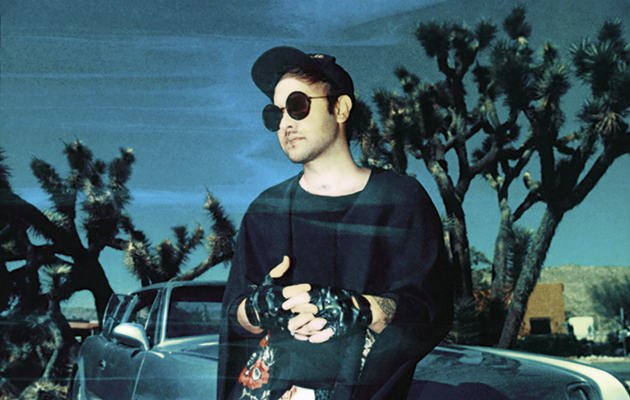Like us on Facebook to keep up to date with the latest news from Uncut From the Korean Demilitarized Zone to earthquake-hit Mexico City, Unknown Mortal Orchestra recorded their ambitious new album Sex & Food in some perilous locations – and lived to tell the tale. Tom Pinnock joins creative m...
Nielson’s favourite painting is part of Goya’s Black Paintings, daubed straight onto the plaster of his house between 1819 and 1823. These 14 pieces reflect the artist’s unraveling mental state, portraying witches, a drowning dog, grotesque-faced figures and two peasants scrapping like it’s forever kicking-out time on a Saturday night.
“How mad is that?” says Ruban, as we stare at The Great He-Goat, depicting a group of faces huddled before the silhouette of a devilish goat-headed man. “This old man who used to be a famous painter, just huddled in some room somewhere, painting that, for no-one!”
Goya’s process with the Black Paintings in some ways echoes Nielson’s approach back in 2010, when he first began recording the music that would become Unknown Mortal Orchestra’s debut album at home.
“I thought it would be embarrassing to show people that music,” Nielson explains, now ensconced on a wall outside the Prado, bathing in the winter sun as a classical guitarist plays chanson nearby. “But people liked it. So the only way I can make music that other people like is if I make exactly what I want.”
Ruban and Kody Nielson grew up in Auckland, kids of a Kiwi jazz musician father and a Hawaiian mother. Ruban studied fine art at the University Of Auckland and wanted to be a painter, but the brothers formed art-punk quartet The Mint Chicks in 2001. “It was only about 200 people in Auckland who ever truly understood what the band was about,” says Ruban. “I think we were probably one of the best rock bands in the world at that time, if you caught us at the right time. But as soon as we thought somebody had an idea of what we were, we would do something to make them feel silly that they thought that.”
After recording their third album, Screens, in their new home of Portland – assisted by Jacob, a new friend Ruban had met in Oregon – the band split after a gig on March 12, 2010 ended with an onstage scrap.
“It was kind of a fight… well, not a fight,” explains Kody Nielson, then the band’s frontman. “I was throwing the drums around. For the crowd it’s entertaining, but within the band it can be a little bit destructive.”
“The reason that the Mint Chicks broke up is because of our rivalry,” says Ruban, discussing his and Kody’s relationship, “and because of drugs and stuff. I had just had a baby, my twenties were over, and I was ready to do something more dignified – something creative, but more like a real job.”
Nielson worked at becoming an illustrator, but retreated to his basement to begin music privately; the results rejected the Chicks’ abrasive sound for a mix of lysergic ’60s garage and looped drums. Key to the sound was his new Fender Jag-Stang, which inspired Nielson to abandon his plectrum and develop a nimble fingerpicked style, as suitable for jazzy chords and folky counterpoint as fuzzy lead. After coming up with the band name, Nielson stuck a couple of songs, “Ffunny Ffriends” and “Thought Ballune”, online. Almost immediately, his inbox was filled with offers of tours, record deals and more. The waves reached New Zealand, too.
“My friend told me about some songs he’d heard on the student radio in Auckland,” remembers Kody. “When I heard ‘Ffunny Ffriends’, I started recognising the chord voicings, the ninth chords. I was like, ‘This sounds like… Ruban.’ Then I started recognising his voice, and I was like ‘Holy shit, this is Ruban!’”
Joined by a series of drummers, including Julian Ehrlich, now Whitney’s frontman, and Amber Baker, “road dogs” Nielson and Portrait set out on what turned into a six-year tour. Their third album, the excellent Multi-Love, pushed the band to a new level of acclaim, helped along by its mellifluous funk and disco grooves and the eye-catching story of Nielson’s personal life: he and his wife had entered into a polyamorous relationship with a Japanese woman, until her visa expired and she was forced to leave the US.
“A lot of the point of that record got lost,” says Nielson, still smarting from the media’s coverage, “because people think it’s about this relationship, but the thing that really amazes me about that process is I had that phrase with no idea what it meant. But then my life kind of built around it. To me, that’s a million times more interesting than the idea that it’s literally referring to some polyamorous relationship.”



